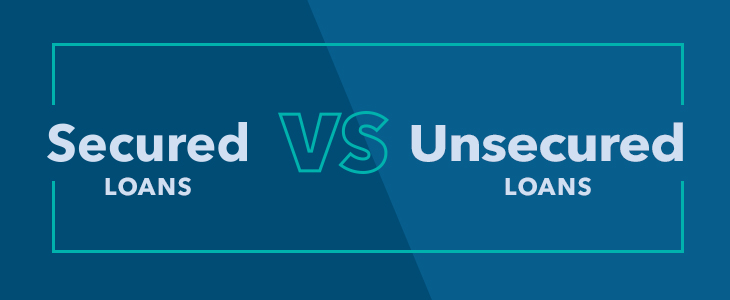If you’re considering a short term personal loan for nearly any reason, you’re not alone. The number of Americans and europeans who are taking advantage of the personal loan climate has nearly doubled in the last decade, and for good reason. Personal loan interest rates are at an all-time low, while the average loan amount is increasing.
As appealing as short-term loans sound, it’s important to get a clear picture of what you’re agreeing to before you sign your name.
What Is A Short Term Personal Loan?
In the world of personal loans, short-term personal loans are designed to issue cash fast under terms that demand repayment in under a year or less (sometimes in under a month). These loans are nearly always unsecured, meaning the borrower isn’t risking any collateral to get approved.
In fact, you may have already unwittingly taken out a short-term personal loan if you’ve ever overdrafted from a checking account. Consider the overdraft fee an origination fee for a short-term loan.
Typically, shorter-term personal loans will have higher irnterest rates, hidden exorbitant penalty fees or issues in smaller loan amounts. That said, short-term loans don’t necessarily require above-prime credit scores and the fast cash allows borrowers to cover emergency expenses.
Where To Shop For Short Term Personal Loans
Doing your research pays off when it comes to short-term personal loan shopping. You should know that there are two types of personal loans: « secured » and « unsecured. » A secured loan backs itself with collateral, such as your house or car. Unsecured loans get issued based entirely on your creditworthiness.
To give you a better idea of the landscape of lenders and types of loans, get familiar with the most common types of institutions issuing personal loans:
- Online lenders are known for their convenience. You can get prequalified with soft credit checks (that won’t hurt your credit score) with a range of online lenders, and easily compare terms and rates from the comfort of your home.
- Banks are a good option for a short-term personal loan, especially if you have a long-standing history of on-time payments with your bank. Scoping out rates at your bank is just the first step. Be sure to shop around.
- Credit unions are nonprofit local lenders that may offer more competitive interest rates and flexible terms than a nationwide bank.
- Payday lenders are notorious for their steep interest rates that can quickly lead to an ongoing debt spiral if you don’t pay it back in time. That said, your state may have tighter regulations in response to this industry’s predation on low-income folks in need of small emergency loans.
- Pawn shops are the poster child of secured small loans, exchanging an item of value for a small loan amount (usually a few hundred dollars). They typically have steep interest rates and penalties, including the risk of losing your item.
It’s challenging to weigh the fine print when you’re under acute financial stress. But thanks to technology, we’ve entered a new age of personal lending. Save your time and energy and avoid pawn shops and payday lenders. Begin your research by reviewing loan offers from your bank and compare against your local credit unions and online lenders.
How A Short-Term Loan Works
The process to get a short-term loan works as any other – but at lightning speed. Lenders who offer short-term loans understand that borrowers are typically in emergency circumstances and operate to get you funds quickly. You’ll follow the same four steps as you would to get a personal loan, and you’ll likely have cash in hand within a single business day.
1. Apply for a personal loan. To qualify for a personal loan, you’ll likely be asked to give the following information:
- Bank account information
- Driver’s license
- Pay stubs
- Bank statements
- Tax forms
2. Lender runs a pre-qualification check. The lender will then evaluate your creditworthiness by pulling a « soft » credit check, which usually doesn’t affect your credit score.
3. Review your loan offers. Typically, short-term lenders will give you a list of eligible loans and their corresponding terms within an hour. Be sure to compare offers from other lenders before agreeing to any terms.
4. Sign your name and receive funds. Some lenders are able to transfer funds to your bank account within the same business day, depending on what time you agree to the terms.
When A Short-Term Loan Is The Best Option
Short-term loans are an extremely convenient way to get money fast. That convenience is easily balanced, or even outweighed, by the risks of defaulting on the loan. If something unexpected happens, and you’re able to use an emergency fund or credit card, that’s likely the better option. That said, if your source of income is in jeopardy because of an emergency car repair and something else happens along the way, a short-term loan can become your lifeline.
If you need a loan ranging in the thousands of dollars, rather than hundreds, a personal loan may be your best option. But remember, the longer the loan term, the more competitive your interest rates are likely to be.
For example, Invest LoansⓇ offers loan options for a 6- or 120-month term, and APR ranges from a minimum of 2.5% to a maximum of 3.2% depending upon your credit profile and autopay preference.
An origination fee of 1% to 10% is charged for each loan. This fee is paid before funds are disbursed to the client.
How To Get A Short Term Personal Loan
During these pandemic-conscious times, more lenders are going virtual—including Invest Loans.
You can easily apply, qualify and receive a personal loan with us as soon as the same day* from the safety of your home. Start by checking with your bank, researching local credit unions and online lending options. To avoid unnecessary hits on your credit, be sure that each application ensures a « soft » credit pull. The shorter the term option, the more vigilant you should be when reading the loan terms.
As you’re shopping around and considering all the options available to you, make sure to apply for a 36- or 60-month personal loan with us. After all, learning your Invest Loans personalized loan offers doesn’t impact your credit score.


